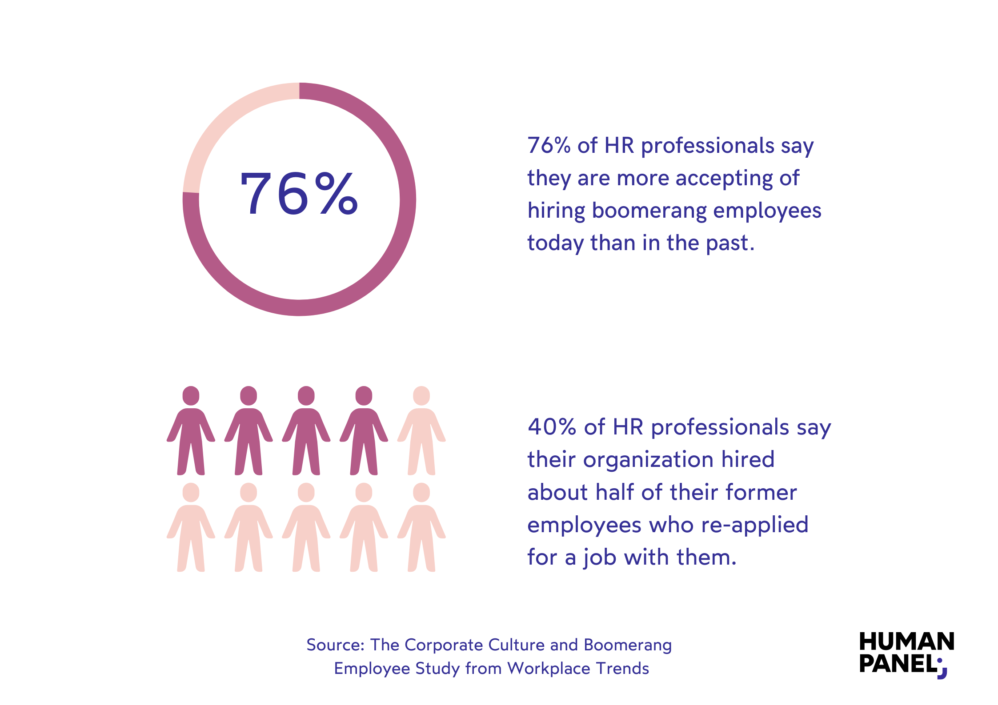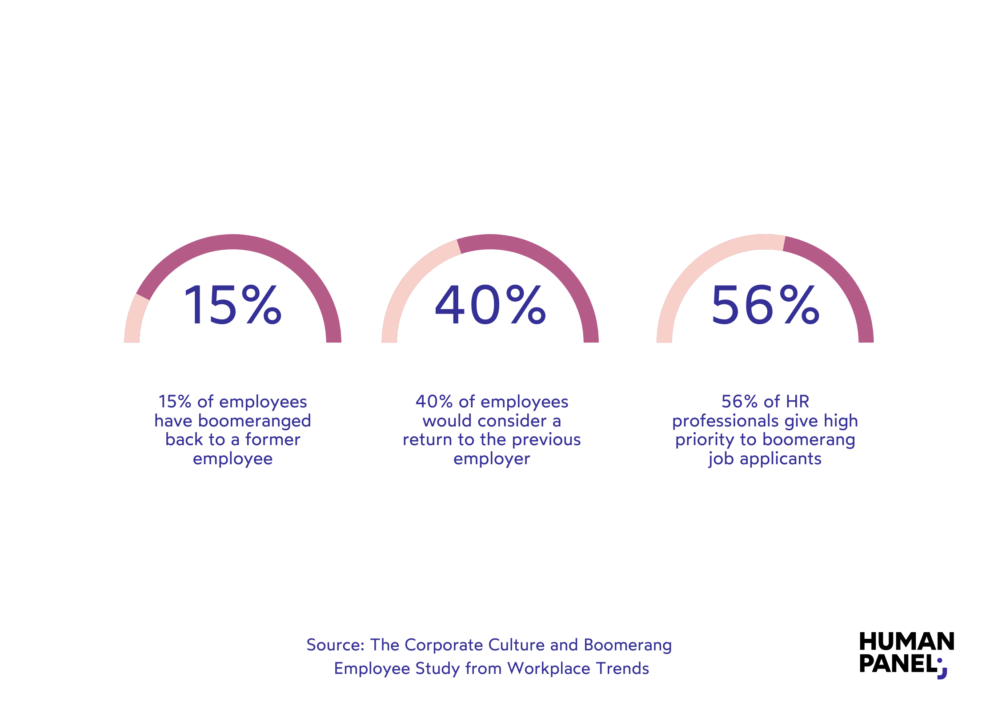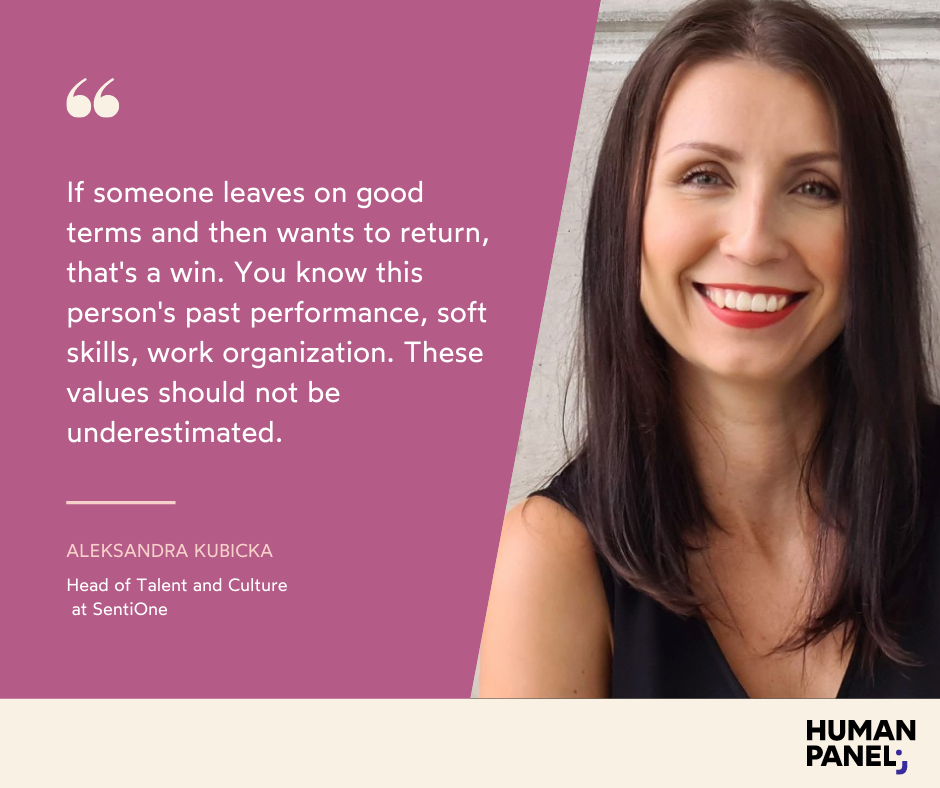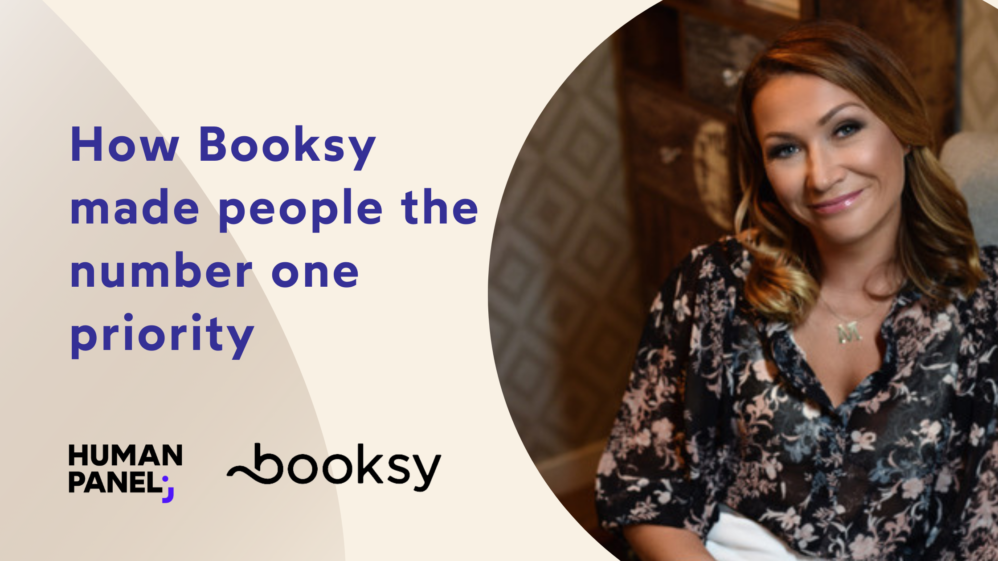I was rehired as a boomerang employee and this is what happened

Aleksandra Kubicka left her company, only to be rehired as a boomerang employee after two years. Now she recruits boomerangs herself. She agreed to share some of her thoughts with us.
“I had the best farewell party I could imagine – with a delicious cake and no hard feelings. Working at SentiOne was great, as was the management and company culture. And I’m not the only one who says so,” Aleksandra Kubicka, Head of Talent and Culture at SentiOne, tells Human Panel.
So why did she leave? “I just needed different responsibilities and a different workload at that point, so I went to work somewhere else,” she admits.
It may seem that a departed employee escapes the recruiting pool forever. However, recent data provided by No Fluff Jobs shows that 35% of employees say they would accept working for their former employer. Aleksandra was one of them, although at the beginning, it wasn’t evident for her.
“I thought that SentiOne was a closed chapter. But then I got a call that made me change my mind,” Aleksandra admits.

Hiring a boomerang employee
She received this call from Kamil Bargiel, the CEO and Co–Founder of SentiOne. The conversation went so well that Aleksandra decided to come back.
“I always had nothing but good memories of working at SentiOne, but I had another job at that time and didn’t think about making any changes. That said, I loved SentiOne’s company culture of trust, ownership and freedom, and I honestly felt like a very valuable employee while working there. Also, I appreciated how much trust they would like to put in my skillset to take over the Head of Talent & Culture role. That convinced me. I came back as a boomerang employee. And now I’m recruiting other boomerangs!”
At SentiOne, rehiring employees who have left the company is not an uncommon practice. Aleksandra has recruited a few boomerangs herself. And it can be a wise tactic because former employees already have a deeper understanding of the company culture. Plus, data shows that hiring a boomerang can cost up to 60% less than hiring externally.

Pros of rehiring former employees
Are there other advantages to hiring boomerangs? When an employee returns to the company, the employer “knows what they’re getting.” If someone previously met deadlines and reached high performance, they will likely continue to meet expectations after being rehired. And these metrics will be revealed by data.
“If someone leaves on good terms and then wants to return, that’s a win. Maybe that person learned new skills outside the organization and can bring something more into the company? Also, you know this person’s past performance, soft skills, work organization. These values should not be underestimated”.
Aleksandra Kubicka
Is it a good idea to rehire an ex–employee who quit?
Why then is boomerang hiring such a rare practice? Or maybe it just seems rare?
“From my experience, it seems that rehiring employees is not popular in HR practices. And from my perspective as a recruiter, I would say that it is rare to find a boomerang’s CV – and I’ve sifted through thousands of CVs so far in my career,” Aleksandra points out.
According to The Corporate Culture and Boomerang Employee Study from Workplace Trends (1), hiring employees who have left is not such a foreign idea. The study found that:

“I would say that it all depends on the circumstances. If you’re forming a healthy organization, why wouldn’t you accept people who return? Of course, if someone leaves a company and burns bridges, it’s a whole different story,” Aleksandra says.
Know the reasons for turnover
That’s why it’s worth bearing in mind the person’s reasons for turnover. If the motive was a higher compensation at a competing company or a need for change, there is room for negotiation. But old grievances can resurface and negatively impact performance and productivity.
“During exit interviews, some people give very constructive feedback which can actually help improve the company’s workflow and address painful issues. Others get very emotional and criticize everything in the company. It’s worth tracking those conversations and before getting in touch with a former employee, checking your notes to see if there are any chances for a good match,” Aleksandra shares.
Another factor that makes it challenging to hire boomerang employees is their mindset and the management’s adherence to existing systems. “Sometimes the company’s executives think, ‘They’ve left us, good riddance!’ But it’s just a scheme, and our organization’s experience shows that recruiting boomerangs can be a success,” Aleksandra comments.

Look into data to support your decisions
At SentiOne, this is the case. Rehired employees are most likely to return to take on another role. Often, they are offered a senior position in the same work area after their comeback.
It often turns out that they gained new skills during their break, but regardless of the experience gained, boomerang employees should go through the onboarding process again.
If you’re still considering whether it’s a good idea to rehire an ex-employee who quit, look at the data. Historical records of the boomerang’s behavior and performance will back up your opinion with facts and steer you in the right direction. And if you need analytical tools for your workforce analytics, contact us, and we’ll help you find a solution tailored to your needs. Sign up for a free and non-binding demo to see people analytics in action and change the way you manage HR forever.
Ready to start people analytics with Human Panel?
Above all, be aware that the company mindset shouldn’t be a barrier to hiring valuable talent. Boomerangs can do more than help your company close the talent gap. They can also help you in the area of employer branding. And – as Aleksandra’s example demonstrates – attract other talents.
“When I left, I talked to one of the founders. He said to me, ‘I would love to work with you again.’ At the time, I thought he was saying it out of politeness, but now I know that people who come back to an organization are its best advertisement,” Aleksandra concludes.
Sources:
(1) The Corporate Culture and Boomerang Employee Study by Workplace Trends



